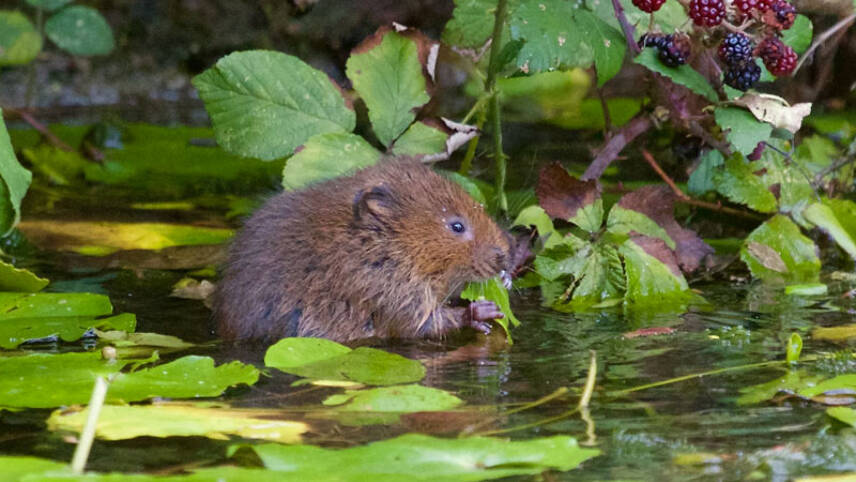Register for free and continue reading
Join our growing army of changemakers and get unlimited access to our premium content

Pictured: A water vole. Image: Richard Bradshaw for National Trust Images
The analysis forms the basis of an updated ‘State of Nature’ report, published this week. It builds on the previous edition from 2019, concluding that there has been little in the way of effective interventions to conserve and restore key habitats over the past four years.
A headline finding is that one in six of the 10,000 plant and animal species assessed are now at risk of extinction.
The abundance of species studied had declined by an average of 19% since 1970 when records began. The decline has been far steeper, on average, among bird species, at 43%.
There have also been declines in the distributions of more than half (54%) of flowering plant species. This, in turn, puts pollinators at greater risk. Worryingly, the report reveals a 34% abundance decline of insect species that provide pest control.
The report attributes this ongoing nature loss to degradation of key natural habitats. Only one in seven of the habitats assessed during the study, taking in data from more than 60 organisations, were deemed to be in good condition. Peatlands, woodlands and ocean habitats fared worst of all.
The report concludes that the main driver of habitat degradation to date has been human activity, primarily from agriculture and aquaculture.
None of the seabed habitats assessed were regarded as being in good condition; the main source of damage was fishing gear. Only one-fifth of farmland in the UK is in a nature-friendly farming scheme and almost two-thirds of woodland is not certified as sustainably managed.
There is a warning that climate change could become the greatest threat to wildlife in the UK in the coming decades – particularly for marine habitats.
RSPB chief executive Beccy Speight said: “The UK’s wildlife is better studied than in any other country in the world and what the data tells us should make us sit up and listen. What is clear is that progress to protect our species and habitats has not been sufficient and yet we know we urgently need to restore nature to tackle the climate crisis and build resilience.
“We know that conservation works and how to restore ecosystems and save species. We need to move far faster as a society towards nature-friendly land and sea use, otherwise the UK’s nature and wider environment will continue to decline and degrade, with huge implications for our own way of life. It’s only through working together that we can help nature recover.”
Ambition and action gap
The UK Government’s 25-Year Plan for the Environment includes a headline ambition to leave nature in a better state for the next generation.
Despite interventions such as legally-binding targets and the launch of farmer payment schemes designed to incentivise nature protection, the Government has repeatedly been warned that it is off track to meeting its overarching vision.
The Office for Environmental Protection (OEP) watchdog concluded in January that the UK is off track to delivering 23 key nature targets. It voiced particular concern about declining species abundance, especially among priority species.
In response to that Committee, the Government said it was “already going further and faster for nature than any other [UK] government before”.


Please login or Register to leave a comment.